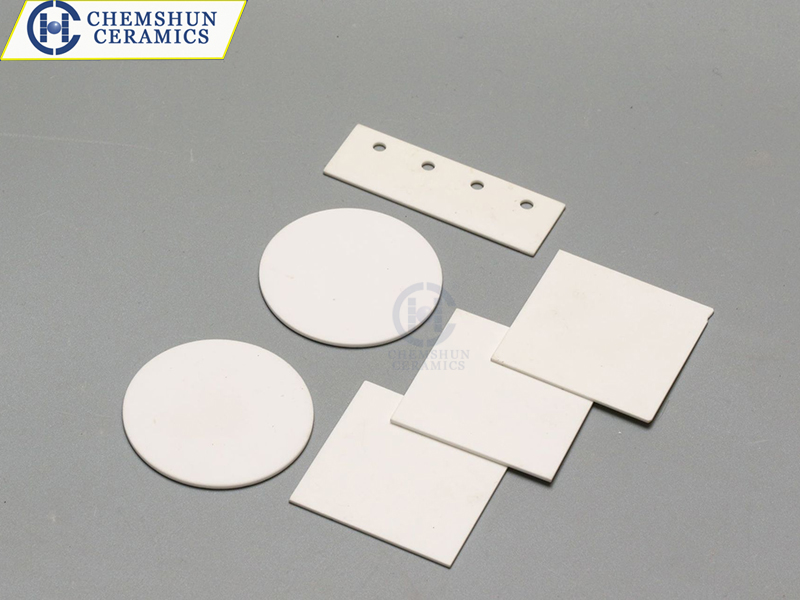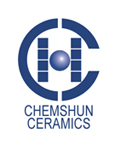Top articles
- Alumina Ceramic Substrates: The Invisible Backbone of Modern Industry
- 99% Alumina Ceramic: The Superior Choice for Bulletproof Armor Materials
- Analysis of the Characteristics of Rubber Ceramic Composite Liners
- Excellent Ceramic Material—ZTA Toughened Alumina Ceramic
- Characteristics of Wear-Resistant Alumina Ceramic Tubes
- Wear resistant ceramic pipes for pneumatic conveying of lithium batteries
- What should be paid attention to when choosing to use wear-resistant ceramic linings
- The difference between wear-resistant ceramic pipes and traditional steel pipes
- Precautions for the application of wear-resistant ceramic glue
- Application of wear-resistant ceramic pipes
Latest articles
- Alumina Ceramic Substrates: The Invisible Backbone of Modern Industry
- Chemshun High-Performance Ceramic Substrate Production Line Kiln Officially Ignited and Put into Operation!
- 99% Alumina Ceramic: The Superior Choice for Bulletproof Armor Materials
- Analysis of the Characteristics of Rubber Ceramic Composite Liners
- Excellent Ceramic Material—ZTA Toughened Alumina Ceramic
- Characteristics of Wear-Resistant Alumina Ceramic Tubes
- Wear resistant ceramic pipes for pneumatic conveying of lithium batteries
- What should be paid attention to when choosing to use wear-resistant ceramic linings
- The difference between wear-resistant ceramic pipes and traditional steel pipes
- Precautions for the application of wear-resistant ceramic glue
Your browsing history

Alumina Ceramic Substrates: The Invisible Backbone of Modern Industry
In the moment a new-energy electric vehicle accelerates, as a spacecraft breaches the atmosphere, or under the steady beam of an operating room’s shadowless lamp, alumina ceramic substrates silently power these cutting-edge technologies. This seemingly ordinary white sheet is, in fact, an indispensable material in modern industrial civilization. With its unique physical and chemical properties, alumina ceramic substrates play a central role in the new energy revolution, semiconductor evolution, and aerospace breakthroughs, serving as a material bridge connecting the microscopic electronic world to macroscopic industrial systems.
I. Excellent characteristics
The outstanding performance of alumina ceramic substrates stems from their unique crystal structure. When purity exceeds 96%, alumina grains form a dense corundum structure. This hexagonal close-packed lattice arrangement grants the material a thermal conductivity of 9.0 W/(m·K)—over twice that of ordinary steel. Its dielectric strength reaches 15 kV/mm, ensuring stable insulation under kilovolt-level voltages. A thermal expansion coefficient (7.2×10-6/°C) closely matching silicon chips allows structural stability across extreme temperature fluctuations from -50°C to 350°C.
In terms of mechanical properties, the three-point bending strength reaches 380 MPa, equivalent to withstanding 3.8 tons of pressure per square centimeter without fracture. This strength originates from grain boundary reinforcement during sintering. When particle size is controlled at 1–3 μm, the material’s fracture toughness reaches 4.5 MPa·m¹/². Surface roughness (Ra) can be maintained below 0.1 μm, providing an ideal platform for precision circuit patterning.
II. Technological Pillars in Diverse Applications
IGBT Power Modules
In this field, alumina substrates demonstrate unique dielectric advantages. In a new-energy vehicle’s drive module, a 0.63mm-thick substrate maintains a dielectric loss tangent (tanδ) of 0.0004 at 10 kHz switching frequency, ensuring over 96% energy conversion efficiency. Its metallized layer achieves a bonding strength of 25 N/mm, retaining circuit integrity after 2,000 thermal cycles (-55°C to 150°C).
The LED packaging field has witnessed innovative breakthroughs in alumina substrates.3D substrates with laser-drilled holes reduce thermal resistance to 0.5°C/W, keeping high-power LED junction temperatures below 85°C while boosting luminous efficiency by 30%. An airport runway lighting system using such substrates extended lifespan from 20,000 to 50,000 hours.
Aerospace
Their reliability shines in aerospace. A satellite’s multi-layer wiring substrate endured 10¹² thermal cycles in vacuum, with a dielectric constant variation rate below 0.5%. Radiation resistance allows electronic systems to function normally under 10? rad doses, ensuring reliability for deep-space exploration.
III. Technological Evolution and Industrial Innovation
Material modification is pushing traditional limits. Substrates doped with 0.5wt% nano-zirconia achieve fracture toughness of 6.8 MPa·m¹/², suitable for vibration-intensive rail transit. Ultra-smooth surfaces (0.02μm Ra) enable 30μm circuit line widths, tripling wiring density.
Under the trend of 800V high-voltage platforms for new-energy vehicles, 1mm-thick alumina ceramic substrates withstand 15 kV insulation. For 5G communications, high-frequency substrates reduce dielectric loss to 0.0001 via grain boundary engineering, supporting 28 GHz millimeter-wave devices. These innovations drive a 9.2% CAGR in global market size.
The evolution of alumina ceramic substrates mirrors modern industry’s relentless pursuit of material excellence. From crystal structure control in labs to precision sintering on production lines, from micron-level circuit etching to nano-scale surface treatments, each breakthrough redefines industrial boundaries. As quantum computing and fusion energy emerge, alumina ceramic substrates will remain pivotal in advanced material systems, continuing to inscribe the legend of industrial ceramics.









